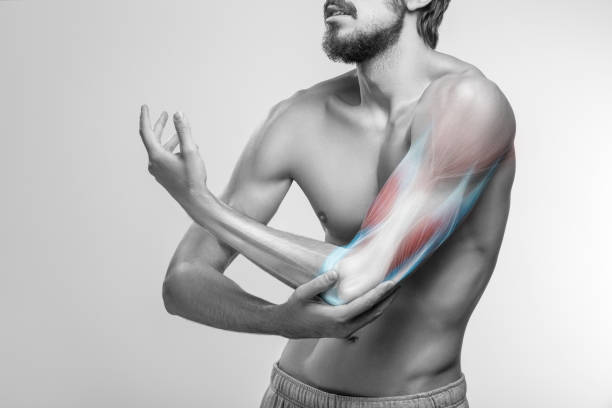The rotator cuff is a group of four muscles and tendons that stabilize the shoulder joint and enable a person to move their arm in different directions. A rotator cuff tear is a common shoulder injury that occurs when one or more of the tendons in the rotator cuff is torn or frayed, leading to shoulder pain and loss of strength.
Diagnosis of a Rotator Cuff Tear
Diagnosis of a rotator cuff tear can be made through a physical examination and imaging tests such as an X-ray, MRI, or ultrasound. Treatment options for rotator cuff tears can vary depending on the severity of the tear and may include physical therapy, non-steroidal anti-inflammatory drugs (NSAIDs), cortisone injections, or surgery.
Symptoms of a Rotator Cuff Tear
Symptoms of a rotator cuff tear can vary from mild to severe, depending on the extent of the tear. Some common symptoms include:
Pain: The most common symptom of a rotator cuff tear is pain in the shoulder, especially when lifting or lowering the arm or reaching overhead. The pain may be felt in the front or back of the shoulder, and may spread down the arm.
Weakness: A rotator cuff tear can also cause weakness in the arm, making it difficult to lift or move the arm. This weakness may be noticeable when trying to lift heavy objects or perform activities that require overhead arm movement.
Stiffness: A person with a rotator cuff tear may also experience stiffness in their shoulder, making it difficult to move the arm or perform certain activities. This stiffness may be especially noticeable in the morning after waking up, or after sitting for a long period of time.
Cracking or popping: Some people with a rotator cuff tear may hear a cracking or popping sound when they move their arm, which can be a sign of a tear in the tendons.
Night pain: In some cases, a person with a rotator cuff tear may experience pain at night, especially if they sleep on the affected shoulder.
If you suspect you have a rotator cuff tear, it is important to see a doctor for an accurate diagnosis. Your doctor may perform a physical exam, as well as imaging tests such as an X-ray, MRI, or ultrasound to determine the extent of the tear and confirm the diagnosis.
Treatment for a Rotator Cuff Tear
Treatment for a rotator cuff tear depends on the severity of the tear and the patient’s age, overall health, and physical activity level. Non-surgical treatment options include:
Physical therapy: Physical therapy can help strengthen the rotator cuff muscles and improve flexibility, reducing pain and increasing range of motion.
Anti-inflammatory medications: Over-the-counter pain relievers such as ibuprofen and naproxen can help reduce pain and inflammation in the shoulder.
Cortisone injections: Cortisone is a strong anti-inflammatory medication that can be injected directly into the shoulder joint to relieve pain and swelling.
Ice therapy: Applying ice to the affected shoulder for 15 to 20 minutes several times a day can help reduce pain and swelling.
Rest: Resting the affected shoulder and avoiding activities that cause pain can help the rotator cuff heal and reduce the risk of further injury.
For severe rotator cuff tears or tears that do not respond to non-surgical treatments, surgery may be necessary. Surgical options for rotator cuff tears include:
Arthroscopic surgery: This is a minimally invasive procedure that involves making small incisions in the shoulder and using a camera to view and repair the damaged tendons.
Open surgery: Open surgery involves making a larger incision in the shoulder to access and repair the damaged tendons. This procedure may be necessary for large or complex rotator cuff tears.
After surgery, physical therapy and rehabilitation are usually necessary to regain strength and range of motion in the affected shoulder. Most people are able to return to normal activities, including work and sports, within several months of surgery.
Recovery from rotator cuff surgery can take several months and may include physical therapy and rehabilitation. The goal of rehabilitation is to restore strength, range of motion, and function to the affected shoulder.
Conclusion
Rotator cuff tears can cause pain, weakness, stiffness, and loss of mobility in the shoulder. Treatment options for rotator cuff tears may include physical therapy, NSAIDs, cortisone injections, or surgery. If you suspect that you may have a rotator cuff tear, it is important to seek medical attention to determine the best course of treatment for your individual needs.

 Home
Home Health
Health Diet & Nutrition
Diet & Nutrition Living Well
Living Well More
More












